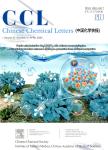Graphene from microwave-initiated upcycling of waste polyethylene for electrocatalytic reduction of chloramphenicol
作者机构:College of ChemistryChemical Engineering and Materials ScienceCollaborative Innovation Center of Suzhou Nano Science and TechnologySoochow UniversitySuzhou 215123China
出 版 物:《Chinese Chemical Letters》 (中国化学快报(英文版))
年 卷 期:2024年第35卷第4期
页 面:187-192页
核心收录:
学科分类:083002[工学-环境工程] 0830[工学-环境科学与工程(可授工学、理学、农学学位)] 081705[工学-工业催化] 08[工学] 0817[工学-化学工程与技术] 080502[工学-材料学] 0805[工学-材料科学与工程(可授工学、理学学位)] 0703[理学-化学]
基 金:the financial support provided by the National Key R&D Program of China (Nos.2020YFC1808401 and 2020YFC1808403) National Natural Science Foundation of China (Nos.22078213, 21938006 and 51973148) Basic Research Project of Cutting-Edge Technology in Jiangsu Province (No.BK20202012) Prospective Application Research Project of Suzhou (No.SYC2022042) Water Research and Technology Project of Suzhou (No.2022006) the Priority Academic Program Development of Jiangsu Higher Education Institutions (PAPD)
主 题:Microwave Ti_(3)AlC_(2) Electrochemistry Dechlorination Chloramphenicol
摘 要:Waste polyolefin plastics, accounting for 50% of all plastic waste, represent a tremendously unexploited carbon source. Efficiently upcycling polyolefin waste into value-added carbon materials for waste water treatment avoiding using noble metals is challenging but economically and environmentally sustainable. In this work, MAX-Ti_(3)AlC_(2) supported Fe selectively catalyzes polyolefin into few-layered graphene in 5 min under microwave treatment. Graphene and MAX supported Fe(Fe@MLC) can completely(99.9%)degrade chloramphenicol(CAP) within 60 min, retain robust after 10 cycles and work efficiently at a wide p H range(3.87–13.03), avoiding the usage of noble metal. Moreover, the electrochemical active surface area(ECSA) of Fe@MLC is 2.7 times higher than that of commercial Pt/C. This work provides a cheap and efficient catalyst that promotes deconstruction of plastic wastes and indirectly degrades antibiotics thereby realizes the treatment of waste water with waste plastic.



